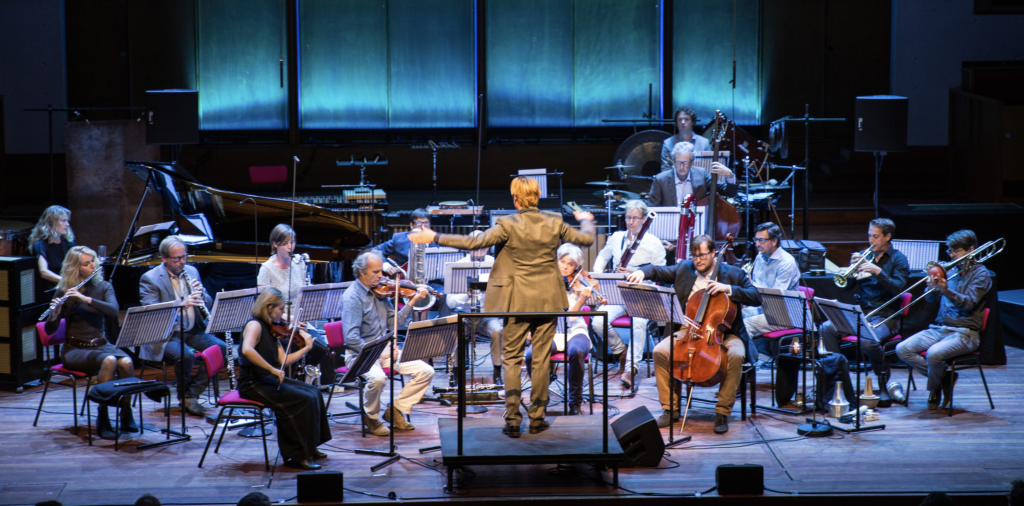Sparrow Episodes (2006)
for sixteen players (flute, oboe, 2 clarinets, bassoon, horn, trumpet, trombone, piano, percussion, electric guitar, 2 violins, viola, cello, bass) [8:30]
Sparrow Episodes unfolds like a musical comic book, a series of consecutive snapshots. Musical material varies wildly from frame to frame, but as a whole they trace a single relentless forward narrative. Ideas are introduced, explored for very small spans of time (20-30 second on average), but are never given sufficient time to develop before they are pushed aside to make way for the next idea. This pattern continues for the first three-quarters of the piece, until the guitarist activates an eight-second delay loop for the final two minutes. Recall is avoided for most of the piece then forcibly imposed at the end, and memory has a rather untraditional and dysfunctional role as a result, as if the saturated world of the opening is viewed in distant retrospect in the conclusion.
Two common threads recur throughout the piece. First, a chord progression borrowed from the song ‘Sparrow’ by Myshkin (a songwriter and singer friend from my high school days in New Orleans), the obscure departure point for this project simply because of its strong resonance in my own memory. The second is the sound of the electric guitar––my guitar, played through a cheap amp in the small apartment in Paris where the piece was composed this summer. Its rough, dirty sound is integrated literally, by placing a guitar amidst the ensemble, but also figuratively, by coloring the vocabulary of gestures and harmony of all the instruments. The harmonic compass of Sparrow Episodes is wide, ranging from tonal to ‘spectral’ harmonies derived from the amplifier’s ring modulation, and part of its purpose is to force a dialogue between these potentially contradictory systems of thinking.
The piece is scored for sixteen players (the standard formation of the Nouvel Ensemble Moderne, plus electric guitar), and the musicians are separated onstage into four quartets: strings in front, woodwinds on the left, brass and bassoon on the right, and the piano, percussion, guitar, and an amplified contrabass in the rear.
